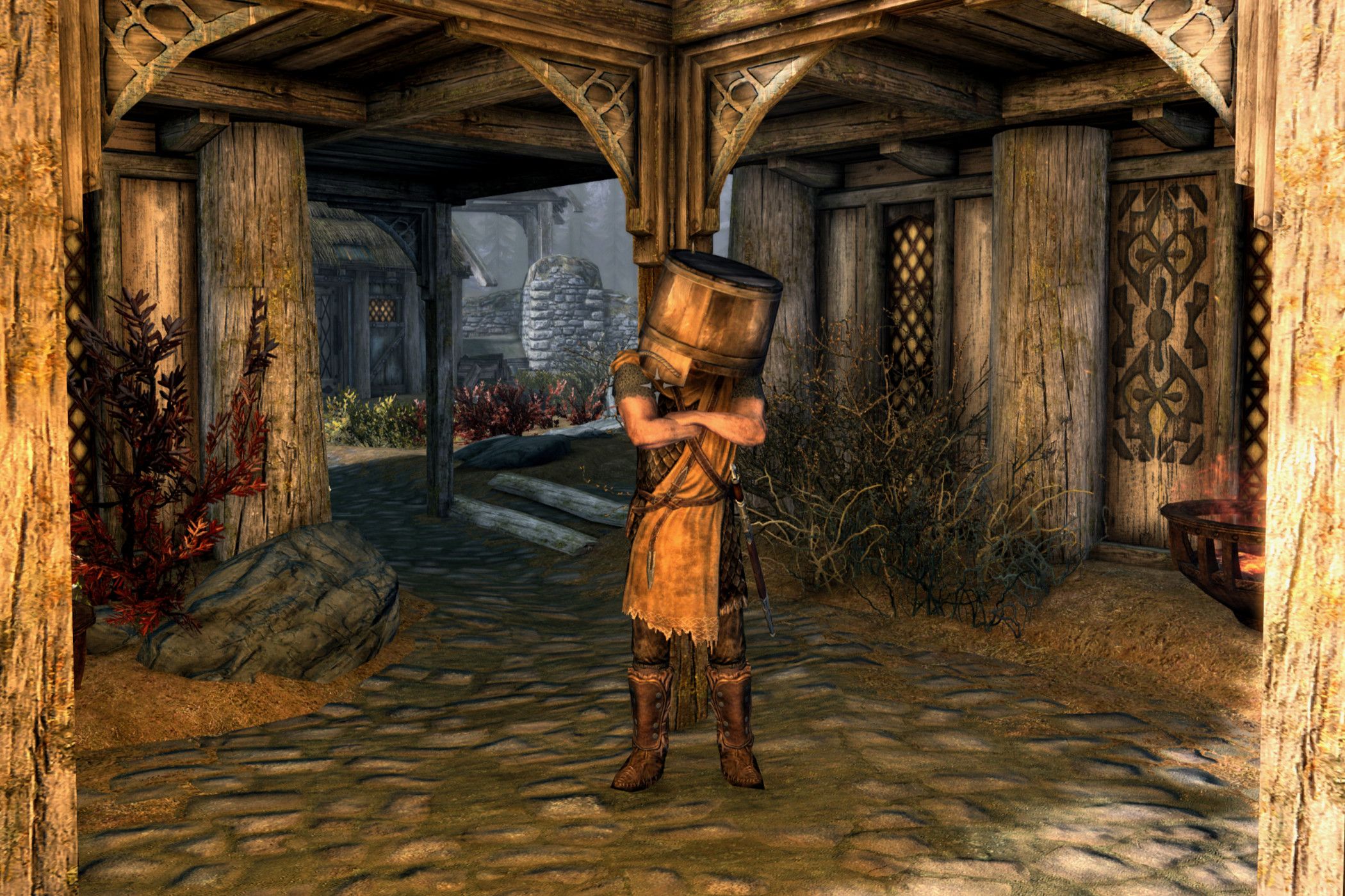
The Potential Impact of a New Xbox Handheld Device by Microsoft: A Closer Look at Why the Gaming World Needs It Now

The Potential Impact of a New Xbox Handheld Device by Microsoft: A Closer Look at Why the Gaming World Needs It Now
Key Takeaways
- Microsoft may introduce a powerful Xbox handheld, surpassing Steam Deck with AMD’s RDNA 4 and Zen 5 processes.
- A potential Xbox handheld could offer a better Windows gaming experience or focus on a true mobile Xbox interface.
- A portable Game Pass machine could see Microsoft launch a portable with a huge library of titles from day one.
- One of the possible names for such a device would be the Xbox Series P, with “P” standing in for “Portable.”
Handheld gaming has seen massive growth since the success of the Nintendo Switch and Steam Deck. Now rumors are swirling that Microsoft is introducing a handheld of its own, possibly called the Xbox Series P, and we’re excited.
A More Powerful Steam Deck
The Steam Deck is a Linux-based handheld gaming PC that uses a compatibility layer called Proton to play games in your Steam library. Thanks to its aggressive price point, impressive-at-the-time hardware, and compatibility with a large number of titles, the Steam Deck was pretty much an overnight success for Valve.
Despite receiving a revision with the introduction of the Steam Deck OLED in late 2023, the Deck still packs almost identical hardware to the model that debuted in February 2022. Under the hood is a custom AMD APU built on the same RDNA 2 and Zen 2 architecture found in the Xbox Series consoles and Sony’s PlayStation 5.
Considering Microsoft’s position in the console market as a device manufacturer that pushes for high-end graphics and experiences, it makes sense that an Xbox handheld would push the boat in terms of performance beyond what Valve has already achieved with the Steam Deck.

Marcus Mears III / How-To Geek
Since the Xbox ecosystem already uses AMD chips, it would make sense for Microsoft to use the company’s latest graphics and processor architecture. In early 2024, that’s RDNA 4 and Zen 5. As was the case with the Xbox, Steam Deck, Nintendo Switch, and other projects at this scale, the silicon inside any Xbox handheld would be a custom order.
What if Microsoft can get within spitting distance of the performance seen in the Xbox Series S, albeit at a smaller and pocket-friendly resolution? Dedicated hardware for upscaling and frame generation using AMD’s FidelityFX Super Resolution could make all the difference.
Potentially Good for the Windows Handheld Experience
There are two routes Microsoft can go with an Xbox handheld, and one involves a fully functional version of Windows. Though we haven’t seen Windows running on an Xbox before, the arrival of so many handheld gaming PCs that run Windows could present Microsoft with an opportunity that’s hard to resist.
Handhelds like the ROG Ally offer a “true” Windows gaming experience. These handhelds forego the Steam Deck’s Linux wizardry in pursuit of the native experience you get on a full-size gaming PC. Unfortunately, the user experience leaves a lot to be desired.
Using a mouse with a thumbstick isn’t fun, and tapping on-screen elements with your fingers leaves grease all over the display. Furthermore, the mish-mash of third-party utilities you need to use to manage the device can be miserable. To quote Sydney’s ROG Ally review for How-To Geek : “things are more than a little rough around the edges when you aren’t actually playing a game.”

Hannah Stryker / How-To Geek
Since Microsoft has pivoted hard towards subscriptions in the form of Game Pass, introducing a handheld-friendly Windows interface makes a lot of sense. Debuting this interface alongside an Xbox handheld but leaving it open to other manufacturers is unlikely to harm the company’s long-term plans. Microsoft is still the PC company and they dominate the non-console gaming market.
Microsoft can solve this problem from the inside, by making a change to the operating system that similar handhelds can make use of. A better handheld Windows gaming experience further cements Windows as the platform for PC gaming, and they can probably sell more Game Pass subscriptions while they’re doing it.
Alternatively, a True Mobile Xbox Experience
The other direction leaves Windows at the door and lets Microsoft focus on providing a proper portable Xbox experience. This would likely resemble the same dashboard you’ll see on a regular Xbox console, a transition that should “just work” on a handheld.
The dream would be a machine that can do everything that a “real” Xbox can do, albeit on the go. That would include access to many Xbox 360, Xbox One, and current-generation titles. These could be games you bought 15 years ago or those added to Game Pass last week.

Starfield
Tim Brookes / How-To Geek
Having the Xbox Series S as a somewhat antiquated standard that so many developers have had to grapple with could be a blessing for a future portable. Games that are already optimized for weaker hardware would be easier to get up and running on a handheld.
This could allow Microsoft to quickly build a large catalog of compatible games, particularly if games can be adapted without requiring an update. This has already happened with the FPS Boost feature on the Xbox Series consoles , unlocking frame rates and adjusting render resolution without any input from the game developer. This could work the other way around too.
You might not even have to leave your disc-based games behind either. In 2022 Microsoft applied for a patent that would grant “software ownership validation of optical discs using secondary device.” What if you could just leave a game disc in your Xbox Series X and play said game on a digital-only (potentially portable) console?
It Could Be a Homebrew Monster
The Xbox Series X and PlayStation 5 are essentially custom PCs , but there’s one thing Xbox does that PlayStation won’t: Developer Mode. Pay your $20 and get access to a development environment on your Xbox, where you’re free to write and run custom software.
This is what makes it possible to run emulators like RetroArch on your Xbox . This mode has existed since the Xbox One era, and Microsoft confirmed in 2022 that it has no intentions of removing the mode any time soon. This makes the inclusion of Developer Mode on a portable Xbox all the more likely.
Handheld devices like the Steam Deck and ROG Ally make fantastic portable emulators since they are based on open platforms. The main Xbox dashboard isn’t so open, so a compromise in the form of Developer Mode seems necessary.
If such a portable runs vanilla Windows then there would be no need for a Developer Mode at all, since you’d be able to install regular old Windows emulators.
Game Pass on the Go
Game Pass is arguably the best deal in gaming, offering hundreds of titles for $16.99/month (or $9.99/month on PC, with a reduced selection of games). There’s always something to play, and the subscription includes access to online multiplayer and cloud gaming to boot.
It’s easy to see how attractive a portable Game Pass machine could be. From the moment you take the console out of the box and subscribe (with your first month only costing $1), you’ve got access to a huge library of games. The Switch has something similar with a Switch Online membership granting access to older systems, but how many people are buying a Switch to play Dr Mario?

The Elder Scrolls V: Skyrim
Tim Brookes / How-To Geek
Handhelds like the ROG Ally can access Game Pass, but only Game Pass for PC. It’s also hit and miss in terms of performance, leaving players to their own devices in terms of tweaking settings to get things working smoothly. Microsoft’s position would enable them to work with developers and curate software in a manner that hopefully guarantees a good level of performance.
Combining Native, Remote, and Cloud Play
The Steam Deck can play games natively, over a local network with Steam Remote Play, but cloud gaming relies on a web browser. The PlayStation Portal can play games over the local network or via the internet but has no native gaming capabilities. A portable Xbox could excel at all three.
Arguably the most enticing method would be native play, but remote play from a Series X or S over Wi-Fi or the ability to access Xbox Cloud Gaming titles are solid options too. Microsoft has stated that it wants you to be able to play on any screen (hence Game Pass integration with smart TVs ), and a portable certainly fits into this strategy.
The infrastructure is largely there to make this a success. Cloud saves work well, Game Pass is becoming ubiquitous, and Smart Delivery ensures your console runs the “best” version of a game.
Pricing Strategy Matters
Valve’s Steam Deck might not be the most powerful handheld, but its aggressive pricing strategy is arguably what has earned it so many fans. Valve boss Gabe Newell admitted that launching at $399 was “painful” but the strategy seems to have worked, at least in terms of market adoption.
Microsoft and Sony are no strangers to this strategy. Home consoles are commonly seen as loss leaders, where each box costs more to manufacture than the price paid at launch. Over the course of a console generation, this price evens out until eventually profit is made. On top of this, licensing and software sales (and for Microsoft, Game Pass) make up the difference.

Bill Logudice / How-To Geek
Asus ROG Ally Z1 Extreme (left) versus Steam Deck 512GB LCD (right)
This is a luxury that handheld manufacturers like Asus and Razer cannot afford. They’re not selling an ecosystem or even making money on software, they are hardware manufacturers and that’s reflected in the price. The ROG Ally is more powerful than the Steam Deck but it launched at $700, almost double the price of Valve’s machine.
An Xbox portable could be just as powerful as a competing Windows handheld, at a much sweeter price point.
Though speculation is rife, we’ll have to wait and see what Microsoft announces in the future. The company already promised “some exciting stuff coming out in hardware that we’re going to share this holiday.”
If you can’t wait until then take a look at our best handheld gaming PC round-up and comparison between the Deck, Alley, and Legion Go .
Also read:
- [New] Solving Isolated Sound Issue
- [Updated] 2024 Approved Timeless Videos Selecting Excellent Slow-Motion Cameras
- [Updated] Earnings Expertise for YouTube Creators FB Insights and Tactics for 2024
- Complete Tutorial on Restoring a Broken Micro SD Card to Safeguard Your Data
- Cost-Effective Networking Gear Spotlight: The Capabilities of the TP-Link Archer C50
- Effective Strategies for Learning French at Home
- Head-to-Head Smartphone Showdown: Why the Samsung Galaxy S21 Ultra Stands Out in Android's Top Tier Devices
- In-Depth Look: Is the Google Pixelbook Go Worth Its Premium Cost?
- Insightful Analysis of Sony's Xperia 5: Nimble Format & Luxury Pricing
- Transferring Data Effortlessly: Connecting Your PC with a Galaxy S # Using WiFi or USB Cable Methods
- Transform Your OS: Win7 -> Win11 Upgrade Guide
- Unbeatable Mac XDVD Offer: Save 86%, Upgrade with Media Bundle & Enjoy 6 Premium Apps at No Extra Cost This Black Friday
- Unveiling the Aukey USB Hub - The Essential, Stylish Toolkit for Fast Data Transfer
- Title: The Potential Impact of a New Xbox Handheld Device by Microsoft: A Closer Look at Why the Gaming World Needs It Now
- Author: Scott
- Created at : 2024-12-06 07:40:37
- Updated at : 2024-12-10 18:23:29
- Link: https://buynow-info.techidaily.com/the-potential-impact-of-a-new-xbox-handheld-device-by-microsoft-a-closer-look-at-why-the-gaming-world-needs-it-now/
- License: This work is licensed under CC BY-NC-SA 4.0.